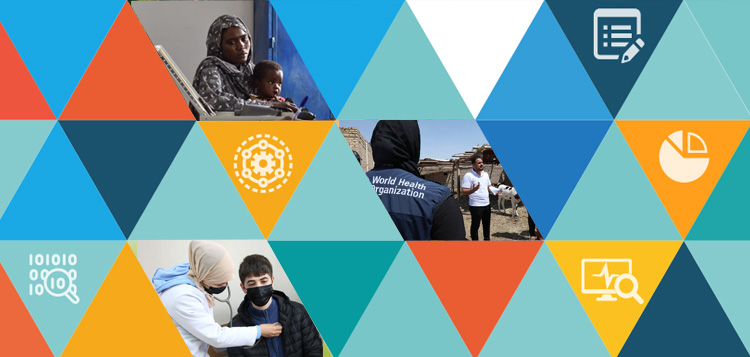
This assessment effort is informed by global goods from the WHO Operational framework for primary health care and its associated PHC core indicators, as well as the Primary Health Care Performance Initiative (PHCPI), in addition to pre-existing regional efforts supporting the family practice approach, PHC quality indicators, and regional health system profiles.
Pilot countries (Egypt, Jordan, Pakistan and later Libya) began their assessments, initiated data collection, and their experience was later used as a model for the remaining countries of the Region. A total of 14 countries have since completed their PHCMI assessments.
Tool overview
The tool consists of a Master Indictor List (MIL) comprising comprehensive indicators specific and related to the structure, inputs, processes, outcomes and impact of PHC performance.
Data mapping is conducted for each indicator and data sources are identified by informant and source information. This process varies according to country. Countries may use one or a combination of methods – or, in coordination with the Regional Office, develop a different method.
Data collection and validation
As part of preparation for data collection, it is important to conduct quantitative data mining and document review. This entails the identification of data sources and overall availability of quantitative data. Such activities include desk review of data repositories and available reports.
Qualitative data collection may be conducted in a number of ways. A part of the PHC assessment is informed by a qualitative assessment tool called the Progression Model which captures 33 rubrics to be collected and scored based on a set of interviews.
Once data have been collected by countries, a formal clearance process is initiated. After data have received Ministry of Health clearance, it is submitted to the Regional Office for external validation. The Regional Office validates each indicator value and data source individually and works closely with the PHCMI country focal point to address any gaps and approve alternative indicators. Following validation, the data are sent to WHO headquarters for a final review and finalization.
Before publication of any data or profile, countries endorse final data.
Implementation manual
The implementation manual provides direction to countries implementing the PHCMI initiative, with consideration given to national and regional context. This guide has been developed to provide guidance to stakeholders and key players involved in the planning and measurement phases of PHCMI in low- and middle-income countries in the Region. It focuses primarily on the planning and measurement phases and describes the necessary steps and processes through which to ensure effective planning, objectively assess current PHC services and collect accurate data. It also highlights the importance of compiling detailed documentation that outlines key findings and policy recommendations for improving PHC services in a country.








